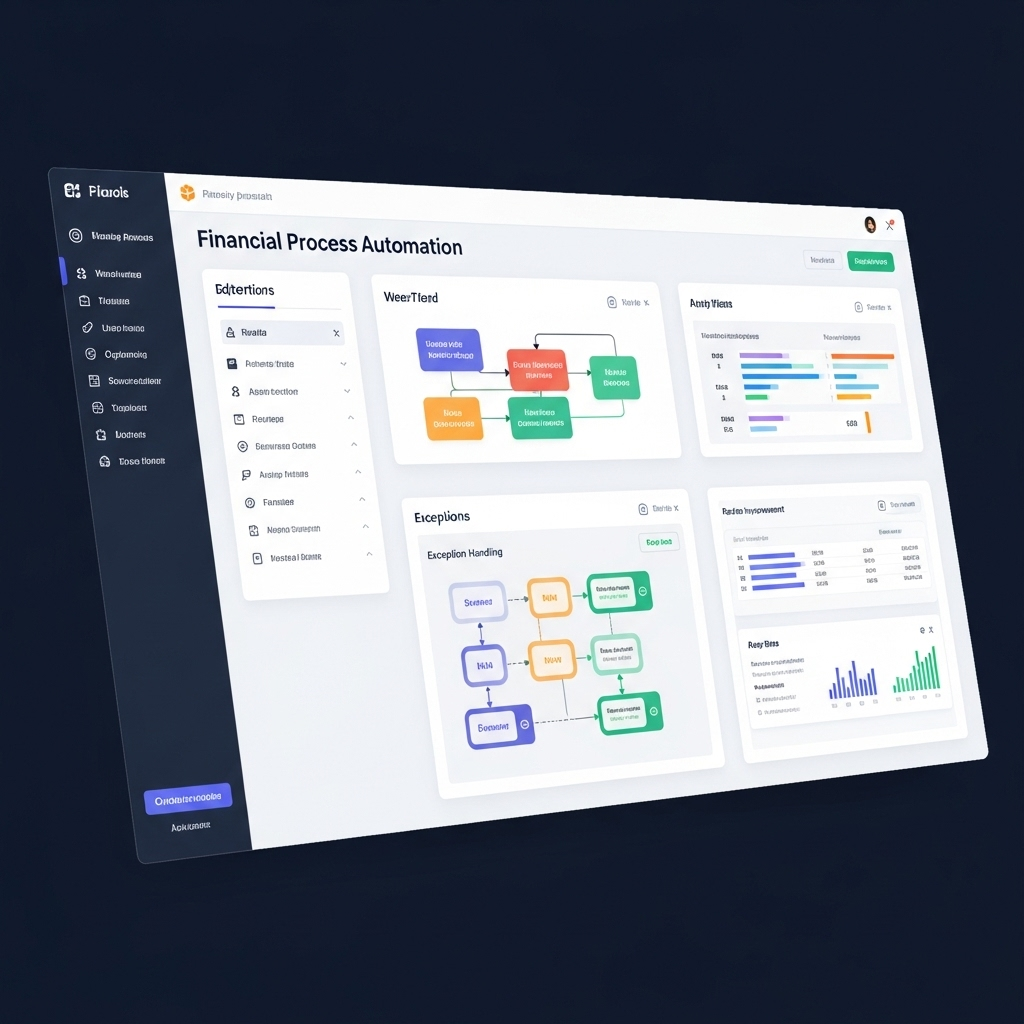
Table of Contents
Strategic Optimization Foundations
Financial workflow optimization requires strategic frameworks beyond basic automation initiatives. Standard approaches often focus narrowly on individual process efficiency. Comprehensive optimization, however, addresses end-to-end workflows spanning organizational boundaries. This holistic perspective enables transformative performance improvements rather than incremental enhancements.
Success metrics deserve careful definition before implementation begins. Traditional measures emphasize processing speed and cost reduction. They don’t always adequately address quality, resilience, and adaptability. Comprehensive frameworks include both operational metrics and strategic indicators. These evaluate workflow contribution to broader business objectives.
The optimization landscape continues evolving with technological advancement. Current implementations benefit from significantly improved automation capabilities compared to previous generations. Strategic planning should leverage these enhanced capabilities. It shouldn’t just digitize existing manual processes without fundamental redesign.
Process Analysis Methodologies
Analysis approaches significantly influence optimization outcomes. Standard methodologies often document existing processes. They may not adequately question fundamental assumptions or explore transformative alternatives. Effective approaches combine traditional documentation with critical examination. This includes looking at process purposes, constraints, and value contributions.
Exception pattern analysis provides particularly valuable insights. Standard processes typically receive primary attention. However, exception handling often consumes disproportionate resources. Comprehensive analysis identifies exception patterns, root causes, and resolution approaches. This enables targeted improvement initiatives.
Cross-functional mapping transforms siloed perspectives into integrated understanding. Financial workflows frequently cross departmental boundaries. This creates visibility gaps and handoff inefficiencies. Effective analysis techniques document these cross-functional flows. They also identify coordination requirements and potential friction points.
Key analysis considerations include:
- End-to-end process visibility beyond functional boundaries
- Value-stream mapping to identify non-value-adding activities
- Decision point documentation with supporting information requirements
- Bottleneck identification through process timing analysis
- Variation documentation with trigger identification
Automation Implementation Approaches
Technology selection establishes the foundation for sustainable optimization. Point solutions provide immediate functionality. Yet, they create integration challenges as automation expands. Enterprise platforms offer greater flexibility through standardized components and comprehensive capabilities. The optimal approach depends on both immediate requirements and long-term automation strategy.
Rule implementation approaches significantly impact both effectiveness and maintainability. Hard-coded rules embedded within automation logic provide immediate functionality. But, they create maintenance challenges as requirements evolve. Externalized rule engines offer greater adaptability. This is achieved through business-managed decision frameworks separated from technical implementation.
Integration architecture deserves particular attention given the interconnected nature of financial processes. Well-designed architectures leverage standardized integration patterns and clear service boundaries. They also utilize appropriate synchronization mechanisms. These foundations enable coherent end-to-end process flows while maintaining system independence.
Exception Management Frameworks
Exception handling design significantly influences operational efficiency. Traditional approaches treat exceptions as process failures requiring manual intervention. This creates unnecessary work and process delays. Sophisticated frameworks implement structured exception management. This includes appropriate routing, contextual information, and resolution tracking.
Categorization frameworks transform chaotic exception handling into systematic improvement opportunities. Well-designed categorization identifies exception types, frequency patterns, and resolution requirements. This structured approach enables both immediate operational efficiency and targeted process enhancement.
Resolution workflow design balances standardization with flexibility. Overly rigid workflows create frustration when handling unique situations. Conversely, completely unstructured approaches sacrifice efficiency and control. Effective designs implement guided resolution pathways. These combine structured steps with appropriate discretion for complex scenarios.
Continuous Improvement Implementation
Measurement frameworks establish essential feedback loops for ongoing optimization. Without comprehensive monitoring, organizations lack insight into actual workflow performance and improvement opportunities. Well-designed measurement implements multi-layered metrics. These address both operational performance and strategic alignment.
Process mining capabilities provide particularly valuable insights for mature optimization programs. Traditional measurement captures predefined metrics. However, it misses unexpected process variations and emerging patterns. Advanced monitoring leverages process mining to identify actual execution patterns, hidden bottlenecks, and unauthorized workarounds.
Improvement governance transforms measurement into systematic enhancement. Rather than treating optimization as a point-in-time project, leading organizations implement structured improvement processes. These processes have clear ownership, prioritization frameworks, and implementation pathways. This governance ensures continuous evolution rather than periodic intervention.
Human-Centered Design
User experience design significantly influences adoption success and operational efficiency. Traditional implementations focus predominantly on technical functionality. They often lack sufficient attention to usability and workflow integration. Comprehensive approaches incorporate human-centered design principles. These principles align automation with user needs and capabilities.
Exception handling interfaces deserve particular design attention. These interactions frequently represent the most complex and variable aspects of financial workflows. Well-designed interfaces provide contextual information and clear resolution options. They also offer appropriate guidance without overwhelming users with unnecessary complexity.
Skill evolution frameworks acknowledge the changing human role in automated environments. Rather than simply eliminating positions, thoughtful implementations identify emerging skill requirements. They also establish transition pathways. This approach maintains valuable institutional knowledge. It also enables staff development aligned with evolving operational needs.